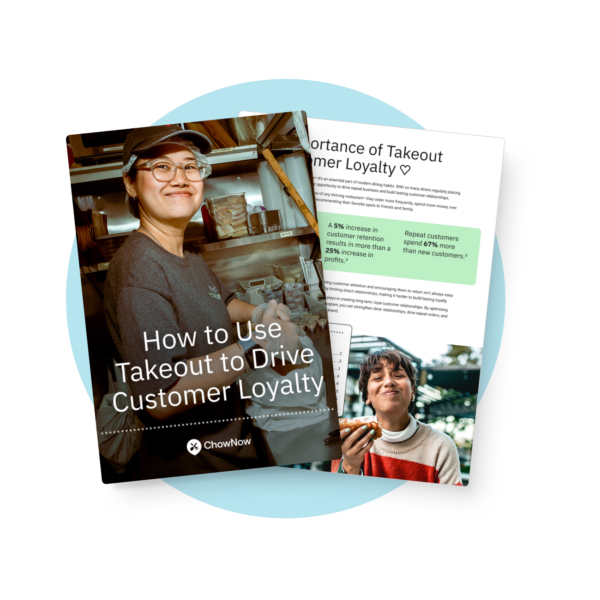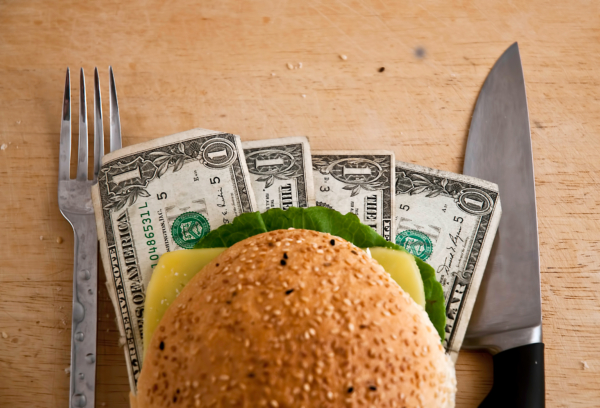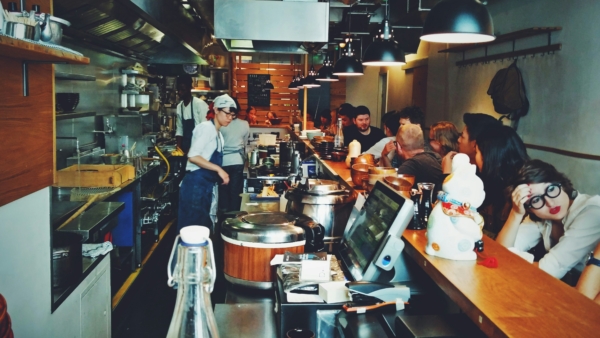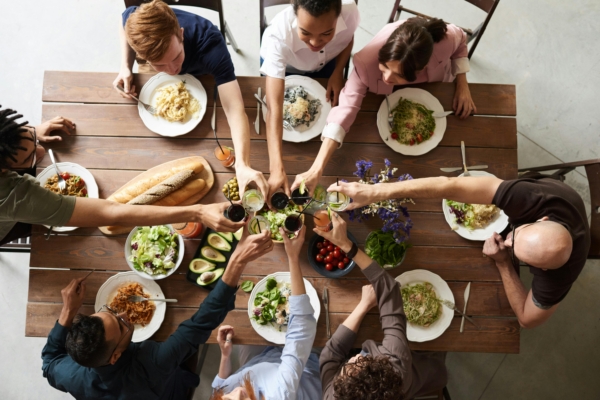How to Calculate and Increase Customer Lifetime Value at Your Restaurant

How you approach restaurant marketing can be broken into two main categories:
- Attracting new customers to your restaurant
- Earning more from the customers you already have
Most restaurant operators pour time and money into the first, but often overlook the massive opportunity in the second.
Think about it: earning more from the customers you already have is significantly easier than convincing new customers to try out your restaurant.
Current customers already love your food, enjoy your customer service, and have a strong connection to your brand. You don’t have to win them over—you just have to keep them coming back.
To turn that into a real strategy, though, you need a way to quantify what those repeat visits are worth.
This number is known as your restaurant customer lifetime value (CLV).
Once you have your CLV, you can then use it to guide your marketing budget, set realistic revenue goals, and prioritize the guests who drive your business.
But how exactly do you figure out that number, and why does it matter so much?
In this article, you’ll learn:
- A simple formula to calculate customer lifetime value at your restaurant
- Why increasing restaurant customer lifetime value leads to more stable business growth
- How to use CLV insights to build loyalty and strengthen customer retention
What Is Customer Lifetime Value (CLV)?
Customer lifetime value (CLV) is the total amount of money a guest is likely to spend at your restaurant over the full span of their customer relationship with you, from their first visit to their last.
Instead of focusing on a single order or check size, CLV zooms out.
It accounts for how often customers buy, how long they stick around, and how much they typically spend. This gives you a much clearer picture of your most valuable guests, not just in the moment, but over time.
Let’s say you run a neighborhood pizza shop. One diner comes in once, orders a $20 pie, and never returns. Another drops by every Friday, spends $35 each time, and brings friends along.
If that pattern holds for a year, that second guest might be worth over $1,800 in total revenue—and potentially much more if they keep coming back.
That’s their projected lifetime value, and it helps you identify which guests are worth retaining, rewarding, and marketing to because they’re the repeat customers that help your business succeed year after year.
How to Calculate Restaurant Customer Lifetime Value
The basic formula for customer lifetime value (CLV) is straightforward:
CLV = Average Order Value × Purchase Frequency × Customer Lifespan
Let’s break that down.
- Average Order Value: How much the average customer spends per visit. You can find this by dividing your total sales by the number of orders in a given time period.
- Purchase Frequency: How often your repeat customers visit within that same period—weekly, monthly, quarterly, etc.
- Customer Lifespan: The average length of time a guest continues to order from your restaurant. That might be two years for a casual spot, or five years for a local favorite with strong customer loyalty.
Here’s a simple example using a fictional restaurant:
- Average Order Value: $25
- Purchase Frequency: 4 visits per month
- Customer Lifespan: 3 years
The formula would look like this: $25 × 4 visits × 12 months × 3 years = $3,600
That guest is worth $3,600 in guest lifetime value—proof that repeat customers are your most valuable ones.
Knowing this helps you calculate customer lifetime value across different customer segments, so you can spot high-value regulars and double down on what keeps them coming back.
Why Customer Lifetime Value Matters
Once you know your customer lifetime value, you can stop making guesses about where you should focus your marketing time, budget, and resources. Here’s what knowing your CLV helps you accomplish.
More Effective Marketing Spend
If you know a guest is worth $3,000 over time, spending $10 on a well-timed email or promo to bring them back is an easy decision. It also helps you avoid overspending on acquisition costs that don’t yield a return.
Stronger Customer Retention Strategies
When you understand how valuable a returning guest can be, investing in a loyalty program that rewards customers makes more financial sense.
You’re not just hoping people come back, you’re building systems that retain customers and increase your repeat business.
Better Planning Across Your Entire Operations
Knowing how often your most loyal diners place orders lets you confidently make operational decisions, for example, when to schedule more (or fewer) staff members.
CLV can also guide menu pricing and guest engagement, especially when combined with insights from your POS systems or CRM systems, because it shows you what your high-value customers order the most, how often they place orders, and what keeps them coming back.
Most importantly, CLV gives you a clearer view of what’s working and what’s not because it ties your revenue to real customer behavior.
Instead of guessing which marketing campaigns, menu items, or loyalty programs are paying off, you can look at how they impact actual repeat customers and long-term value.
If a certain promo boosts short-term traffic but doesn’t improve customer retention, that’s a sign that you need to adjust your marketing efforts.
How to Increase Customer Lifetime Value
You don’t need a huge marketing budget or tech overhaul to increase your CLV. You just need to focus on giving customers a great customer experience and make it easy (and rewarding) for them to come back.
Deliver a Consistently Impressive Experience
Great food, smooth service, and a welcoming atmosphere create the kind of dining experience that earns repeat customers.
Don’t underestimate the power of exceptional service—it’s one of the fastest ways to retain customers and grow guest lifetime value.
Launch a Loyalty Program that Rewards Repeat Customers
A well-designed loyalty program gives guests a reason to keep choosing you over a third-party app or competitor.
Customize your loyalty program to fit your restaurants needs, offer rewards that customers find interesting, and make sure your program is easy to use across your direct online ordering and mobile app.
Make It Easy for Return Customers to Order Again
Customers hate when ordering online feels like work—the moment they encounter friction, they’ll bail.
Make it so customers can quickly reorder their favorites, check out in a few clicks, and get a consistent experience. The smoother the process, the more likely they are to give you repeat business.
Recognize and Reward your High-Value Guests
Every restaurant has a group of high-value customers who spend a disproportionate amount of money compared to other customers.
Train your team to spot them, treat them like VIPs, and give them reasons to keep showing up. A small gesture (like remembering their name and usual order) can go a long way toward building customer loyalty.
Restaurant Customer Lifetime Value Frequently Asked Questions
How often should I recalculate Customer Lifetime Value?
At least once a quarter. Your customer lifetime value isn’t static—guest behavior changes, your menu evolves, and seasonal trends impact visits. Regular updates help you spot changes early and adjust your marketing efforts accordingly.
What’s a “good” Customer Lifetime Value for a restaurant?
There’s no universal benchmark for restaurant CLV because it varies based on average spend, concept, and your service model. A fast-casual spot with $15 tickets might have a lower CLV than a fine-dining restaurant, but both can be healthy if your customer acquisition and retention costs are balanced.
How long should I track a customer before estimating their value?
Aim for at least 6 months of data before estimating a guest’s customer lifetime value. That gives you a more accurate sense of their habits and whether they’re likely to stick around. For newer guests, treat early numbers as directional, not definitive.
Focus on the Customers Who Grow Your Bottom Line
The key to increasing your CLV is focusing on the basics: A great customer experience, an easy way to order, and a brand that guests feel like they have a connection with. When you do those well, everything else follows.
Contact ChowNow to learn how a Direct Online Ordering system and a Rewards Program work together to give customers an amazing experience and incentives to keep coming back.







